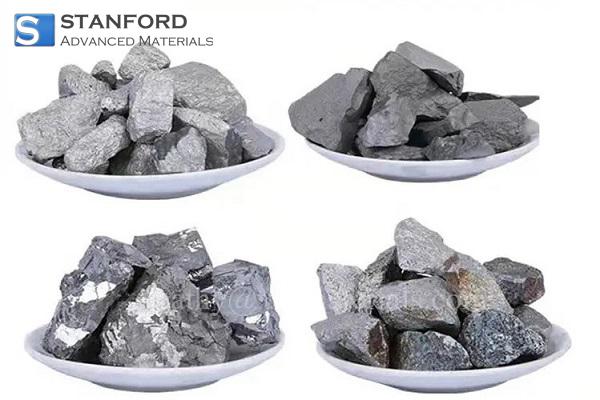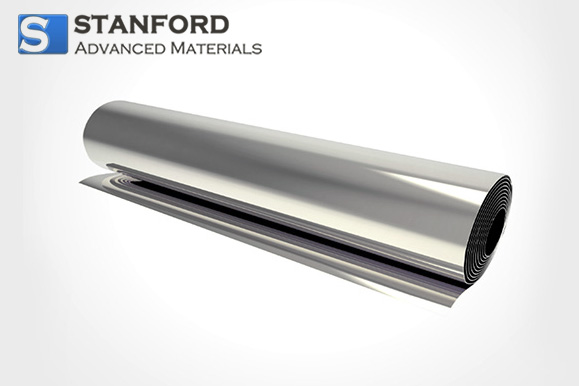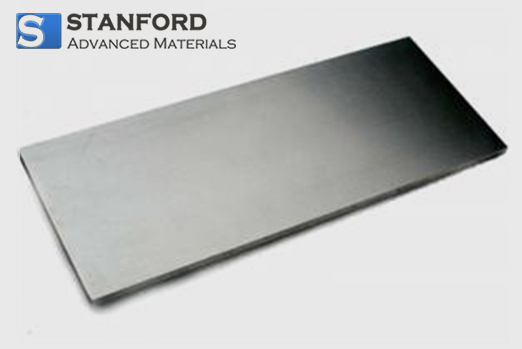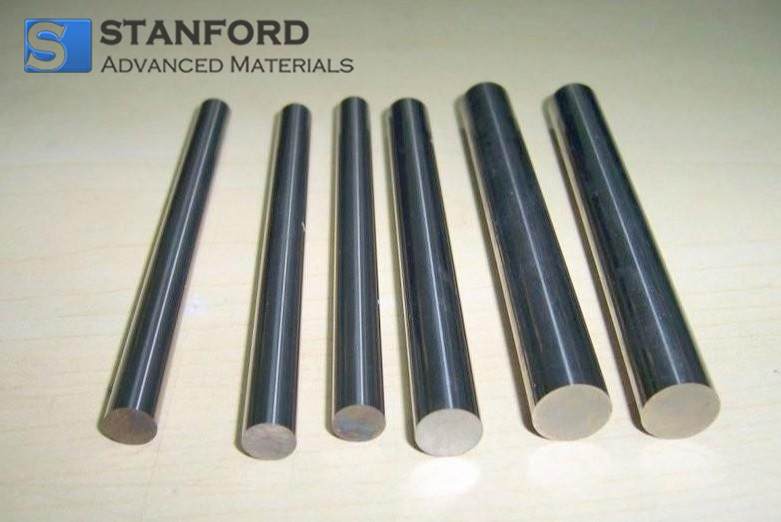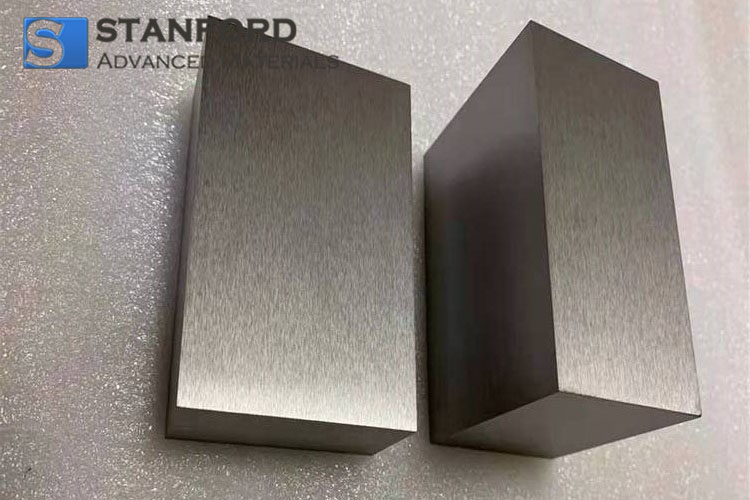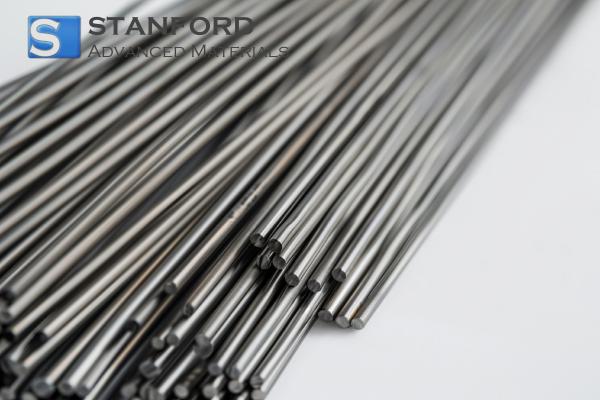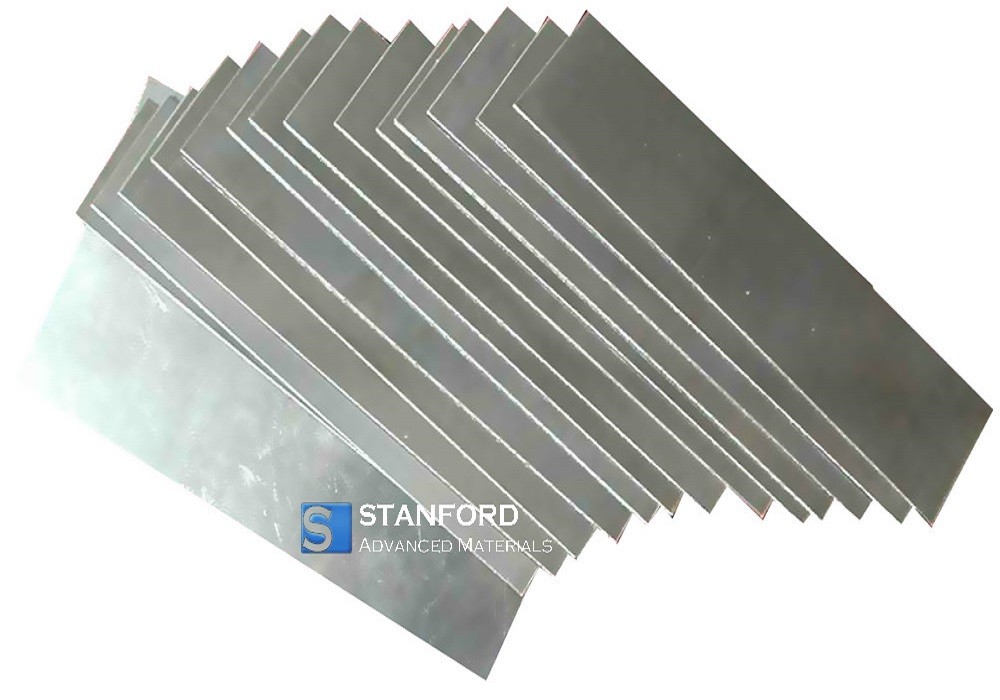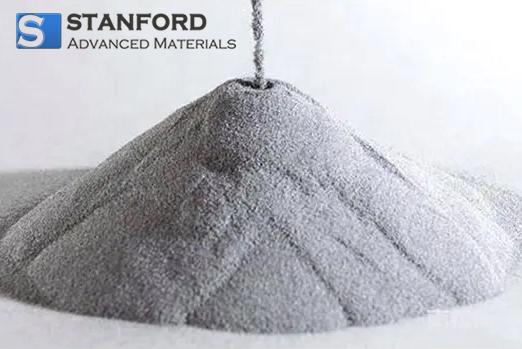SECTION 1. IDENTIFICATION
Product Name: Invar Alloy Powder
CAS #:
Relevant identified uses of the substance: Scientific research and development
Supplier details:
Stanford Advanced Materials
E-mail: sales@samaterials.com
Tel: (949) 407-8904
Address: 23661 Birtcher Dr., Lake Forest, CA 92630 U.S.A.
SECTION 2. HAZARDS IDENTIFICATION
GHS Classification (29 CFR 1910.1200):
Sensitization - skin, category 1B, Carcinogenicity, category 2.
Signal Word: Warning
Hazard Statements:
H317 May cause an allergic skin reaction
H351 Suspected of causing cancer.
Precautionary Statements:
P201 Obtain special instructions before use
P202 Do not handle until all safety precautions have been read and understood
P261 Avoid breathing dust or fume
P272 Contaminated clothing should not be allowed out of the workplace
P280 Wear protective gloves/protective clothing
P302+P352 IF ON SKIN: wash with plenty of soap and water
P333+P313 If skin irritation or rash occurs: Get medical advice/attention
P308+P313 IF exposed or concerned: Get medical advice/attention
P363 Wash contaminated clothing before reuse
P405 Store locked upP501 Dispose of contents/container in accordance with local, state or federal regulations.
SECTION 3. COMPOSITION/INFORMATION ON INGREDIENTS
CAS# Description:
7439-89-6 Iron
7440-02-0 Nickel
SECTION 4. FIRST AID MEASURES
General Measures: Remove patient from area of exposure.
INHALATION: Remove to fresh air, keep warm and quiet, give oxygen if breathing is difficult. Seek
medical attention.
INGESTION: Rinse mouth with water. Do not induce vomiting. Seek medical attention. Never induce
vomiting or give anything by mouth to an unconscious person.
SKIN: Remove contaminated clothing, brush material off skin, wash affected area with soap and
water. Seek medical attention if symptoms persist.
EYES: Flush eyes with lukewarm water, including under upper and lower eyelids, for at least 15
minutes. Seek medical attention if symptoms persist.
Most Important Symptoms/Effects, Acute and Delayed: May cause irritation. See section 11 for more
information.
Indication of Immediate Medical Attention and Special Treatment: No other relevant information
available.
SECTION 5. FIREFIGHTING MEASURES
Extinguishing Media: Use Class D dry powder extinguishing agent.
Unsuitable Extinguishing Media: Do not use water.
Specific Hazards Arising from the Material: Fine dust dispersed in air in sufficient concentrations, and
in the presence of an ignition source, is a potential dust explosion hazard. May emit toxic metal oxide
fumes under fire conditions.
Special Protective Equipment and Precautions for Firefighters: Full face, self-contained breathing
apparatus and full protective clothing when necessary.
SECTION 6. ACCIDENTAL RELEASE MEASURES
Personal Precautions, Protective Equipment, and Emergency Procedures: Wear appropriate
respiratory and protective equipment specified in section 8. Isolate spill area and provide ventilation.
Avoid breathing dust or fume. Avoid contact with skin and eyes. Eliminate all sources of ignition.
Methods and Materials for Containment and Cleaning Up: Avoid dust formation. Sweep or scoop up.
Place in a properly labeled container for further handling and disposal.
Environmental Precautions: Do not allow to enter drains or to be released to the environment.
SECTION 7. HANDLING AND STORAGE
Precautions for Safe Handling: Avoid creating dust. Avoid breathing dust or fumes. Provide adequateventilation if dusts are created. Avoid contact with skin and eyes. Wash thoroughly before eating or
smoking. See section 8 for information on personal protection equipment.
Conditions for Safe Storage: Store in a cool, dry area. Store material tightly sealed in properly labeled
containers. See section 10 for more information on incompatible materials.
SECTION 8. EXPOSURE CONTROLS/PERSONAL PROTECTION
Exposure Limits: OSHA/PEL: ACGIH/TLV:
Nickel 1 mg/m3 1.5 mg/m3
Iron No exposure limit established No exposure limit established
Engineering Controls: Handle in a controlled, enclosed environment. Ensure adequate ventilation to
maintain exposures below occupational limits. Whenever possible the use of local exhaust ventilation
or other engineering controls is the preferred method of controlling exposure to airborne dust and
fume to meet established occupational exposure limits. Use good housekeeping and sanitation
practices. Do not use tobacco or food in work area. Wash thoroughly before eating or smoking. Do not
blow dust off clothing or skin with compressed air.
Individual Protection Measures, Such as Personal Protective Equipment:
Respiratory Protection: Use NIOSH approved respirator.
Eye Protection: Safety glasses
Skin Protection: Wear impermeable gloves; protective work clothing as necessary.
SECTION 9. PHYSICAL AND CHEMICAL PROPERTIES
Form: Powder
Color: Gray
Odor: Odorless
Odor Threshold: Not determined
pH: N/A
Melting Point: ~1425 oC
Boiling Point: No data
Flash Point: N/A
Evaporation Rate: N/A
Flammability: No data
Upper Flammable Limit: No data
Lower Flammable Limit: No data
Vapor Pressure: No data
Vapor Density: N/A
Relative Density (Specific Gravity): ~8.1 g/cc
Solubility in H2O: Insoluble
Partition Coefficient (n-octanol/water): Not determined
Autoignition Temperature: No data
Decomposition Temperature: No data
Viscosity: N/A
SECTION 10. STABILITY AND REACTIVITY
Reactivity: No specific test data available.
Chemical Stability: Stable under recommended storage conditions.
Possibility of Hazardous Reactions: Reacts with strong acids and caustics to form flammable and
explosive hydrogen gas. Contact with sulfur may cause evolution of heat. Contact with halogenatedcompounds and oxidizers may produce violent reactions and fires. Hazardous polymerization will not
occur.
Conditions to Avoid: Avoid creating a dust cloud.
Incompatible Materials: Oxidizers, strong acids, halogenated compounds.
Hazardous Decomposition Products: Metal oxides, carbon oxides, nitrogen oxides.
SECTION 11. TOXICOLOGICAL INFORMATION
Likely Routes of Exposure: Inhalation, skin, eyes.
Symptoms of Exposure: Fines/dusts may irritate lungs, eyes or abraded skin. Inhalation of metal oxide
fumes due to heating beyond the boiling point in an oxidizing atmosphere, such as when smelting or
welding, may cause substernal chest pain, cough, dyspnea and flu-like symptoms. The respiratory
symptoms generally disappear in the exposed individual within 1-4 days.
Acute and Chronic Effects:
Nickel: The most common harmful health effect of metallic nickel in humans is an allergic skin reaction
in those who are sensitive to nickel. Although nickel compounds are known human carcinogens, the
evidence suggests that the relatively insoluble metallic nickel is less likely to present a carcinogenic
hazard than are the nickel compounds that tend to release proportionately more nickel ion.
Iron: If inhaled, iron is a local irritant to the lung and gastrointestinal tract. Inhalation of large amounts
may cause iron pneumoconiosis. Chronic inhalation of finely divided powder may cause chronic iron
poisoning and pathological deposition of iron in the body tissue. Ingestion may cause vomiting,
diarrhea, pink urine, black stool, and liver damage.
Acute Toxicity: No available information
Carcinogenicity:
Nickel: NTP: R - reasonably anticipated to be a human carcinogen IARC: 2B - possibly carcinogenic to
humans
To the best of our knowledge the chemical, physical and toxicological characteristics of the substance
are not fully known.
SECTION 12. ECOLOGICAL INFORMATION
Ecotoxicity: No data
Persistence and Degradability: No data
Bioaccumulative Potential: No data
Mobility in Soil: No data
Other Adverse Effects: No further relevant information available.
SECTION 13. DISPOSAL CONSIDERATIONS
Waste Disposal Method:
Product: Dispose of in accordance with Federal, State and Local regulations.
Packaging: Dispose of in accordance with Federal, State and Local regulations.
SECTION 14. TRANSPORT INFORMATION
Shipping Regulations: Not regulated
UN Number: N/A
UN Proper Shipping Name: N/ATransport Hazard Class: N/A
Packing Group: N/A
Marine Pollutant: No
SECTION 15. REGULATORY INFORMATION
TSCA: All components are listed.
Regulation (EC) No 1272/2008 (CLP): Sensitization - skin, category 1B, Carcinogenicity, category 2.
WHMIS 2015 Classification: Respiratory or skin sensitization, Carcinogenicity.
HMIS Ratings: Health: 2*(chronic), Flammability:1, Physical: 0
NFPA Ratings: Health: 2, Flammability: 1, Instability: 0
Chemical Safety Assessment: A chemical safety assessment has not been carried out.
SECTION 16. OTHER INFORMATION
Safety Data Sheet according to Regulation (EC) No. 1907/2006 (REACH). The above information is
believed to be correct but does not purport to be all inclusive and shall be used only as a guide. The
information in this document is based on the present state of our knowledge and is applicable to the
product with regard to appropriate safety precautions. It does not represent any guarantee of the
properties of the product.
